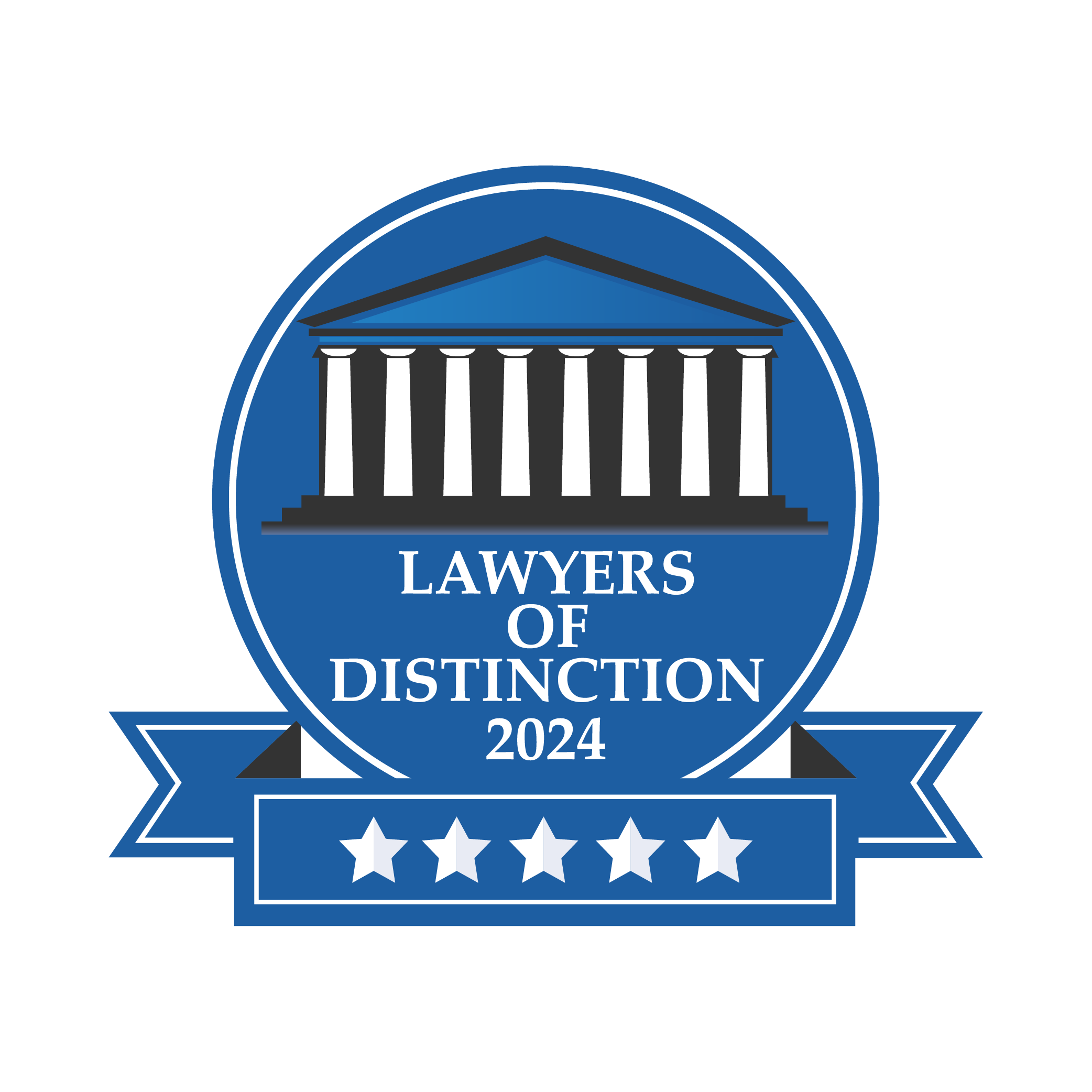According to the Centers for Disease Control, car accident injuries are the leading cause of injury in the U.S. In fact, more than 2.5 million Americans went to the emergency room for car accident injuries in 2012. Car accident victims can suffer a number of injuries. For example:
- Muscle Sprain/Strain
- Broken Bones
- Bone Fractures
- Spine Injuries (including whiplash); and
- Brain Injuries
-
Muscle Sprain/Strain
A sprain or strain is the stretching or tearing of ligaments. Ligaments are the bands of fibrous tissue that connect one bone to another in your joints. Following a car accident, sprains and strains are caused when the body is moved in such a way that it causes the muscles to overextend abruptly. Unfortunately, sprains and strains regularly result in severe pain and muscle spasms. Further, they can cause reduced range of motion, muscle spasms, weakness or difficulty moving, and difficulty sleeping. Following a back sprain or strain, it is important to seek medical treatment immediately. Treatment for a strain or sprain usually involves physical therapy or chiropractic treatments. Car accident victims are occasionally prescribed medication to reduce inflammation and assist with pain stemming from sprains and strains. To prevent further injury following a sprain or strain, physical therapists and chiropractors will perform adjustments and provide stretches and exercises to repair the injured ligaments. Although every person and back injury is different, most people recover from sprains and strains following a 3-6 months of conservative treatment.
Broken Bones
Bone breaks are common injuries in car accidents, Las Vegas truck accidents, and motorcycle accidents. Such injuries, even if surgery is not necessary, can still limit a person’s ability to work or perform her regularly required activities of daily living. During a car accident, broken bones can occur from the body making contact with the interior of the vehicle or from being thrown from a motorcycle and making impact with the ground. In fact, it’s common for passengers to throw their arms in front of their face during an accident, which can result in broken fingers, hands, and wrists. Broken bones can also occur if the victim is not wearing a seatbelt and is thrown from the vehicle during a high-speed or rollover collision. Specifically, semi-truck accidents can result in the most severe and catastrophic injuries. The sheer weight and momentum displaced when a semi-truck crashes into a smaller vehicle is enough to significantly injure the passengers of the smaller vehicle.
Bone Fractures Frequently Associated With Car Crashes
There are many different forms of fractures but all fractures are generally classified as either simple or compound. A simple fracture occurs when the bone fractures, but the break does not pierce the skin. Conversely, compound fractures occur when the bone breaks through the skin. Before treatment can begin, a doctor must identify what type of fracture occurred before attempting to set the bones back into place. The most common bones that can break during a car rash are the following:
- Leg fractures
- Tibia/Fibula Fracture
- Femur Fracture
- Arm/hand fractures
- Wrist Fractures
- Finger fractures
- Humerus fractures
- Ulna and radius bone fractures
- Rib Fractures
- Hip Fracture
- Pelvis Fracture
- Facial/Skull Fracture
- Orbital eye sock fractures
- Back Fracture
- Clavicle Fractures
-
Broken bones rarely pose an immediate risk to a victim’s life. However, they can keep the victim from working or otherwise enjoying their life like they used to until the fracture heals.
Spine Injuries
The spine is the most commonly injured body part following a car accident. Spine injuries can leave you with long lasting pain and suffering that can negatively affect your life. Logically, there are many types of injuries that may occur to the spine following a car accident.
Whiplash
Whiplash is the most common type of spine injury following a car accident. Whiplash often occurs following a rear end collision because the head and neck are initially propelled backwards as the body propels forward, and then suddenly whipped forward. The violent back and forth motion causes severe strain to the ligaments, joints, and discs in the neck causing pain, stiffness, muscle spasms, dizziness, fatigue, or blurred vision. Whiplash injuries are classified as mild to severe and usually require months of physical therapy or chiropractic treatments to heal.
Spinal Stenosis
Spinal stenosis is a narrowing of the spaces within your spine, which can put pressure on the nerves that travel through the spine. During a crash, the discs in your spine are subjected to great force which could cause them to shift or bulge causing narrowing of the spaces within your spine and putting pressure on the nerves running through the spinal column. This pressure can cause pain, muscle weakness, numbness or tingling in the hands or feet, or shooting pains down the arms or legs.
Spondylolysis / Spondylolisthesis
Spondylolysis is a stress fracture in one of the bones in the spine. In some cases, the fracture weakens the bone and is unable to maintain its proper position in the spine and the vertebra starts to shift out of place. This condition is called spondylolisthesis. There are many causes for spondylolisthesis. For example, a vertebra may be defective from birth or a vertebra may be fractured during a motor vehicle collision. When symptoms do occur, the most common symptom is lower back pain. This pain may:
- Feel similar to a muscle strain;
- Radiate to the buttocks and back of the thighs; and/or
- Worsen with activity and improve with rest
In patients with spondylolisthesis, muscle spasms may lead to additional signs and symptoms, including:
- Back stiffness;
- Tight hamstrings (the muscles in the back of the thigh); and/or
- Difficulty standing and walking
Doctors commonly describe spondylolisthesis as either low grade or high grade, depending upon the amount of slippage. A high-grade slip occurs when more than 50 percent of the width of the fractured vertebra slips forward on the vertebra below it. Unfortunately, patients with high-grade slips are more likely to experience significant pain and nerve injury and to need surgery to relieve their symptoms.
Brain Injuries
Concussions
Concussions are common injuries following a car accident. A concussion occurs when your brain collides in to the side of the skull. Interestingly, a concussion may occur even without your head making contact with anything inside the vehicle. Concussions often cause headaches, nausea, dizziness, forgetfulness, confusion, ringing in the ears, mood or personality changes, and even sensitivity to bright lights. While we tend to hear the word concussion frequently, concussions are a traumatic brain injury and should be treated by a medical professional.
Traumatic Brain Injury
Traumatic brain injuries can result from a violent blow or jolt to the head or body. Mild traumatic brain injury (also known as a concussion) may affect your brain cells temporarily. More-serious traumatic brain injuries can result in bruising, torn tissues, bleeding and other physical damage to the brain. Unfortunately, these injuries can result in long-term complications or death. A traumatic brain injury can have wide-ranging physical and psychological effects. Some signs or symptoms may appear immediately after the traumatic event, while others may appear days, weeks, or even months later. The signs and symptoms of mild traumatic brain injury may include:
- Loss of consciousness for a few seconds to a few minutes
- No loss of consciousness, but a state of being dazed, confused or disoriented
- Headache
- Nausea or vomiting
- Fatigue or drowsiness
- Problems with speech
- Difficulty sleeping
- Sleeping more than usual
- Dizziness or loss of balance
- Sensory problems, such as blurred vision, ringing in the ears, a bad taste in the mouth or changes in the ability to smell
- Sensitivity to light or sound
- Memory or concentration problems
- Mood changes or mood swings
- Feeling depressed or anxious
Moderate to severe traumatic brain injuries
Moderate to severe traumatic brain injuries can include any of the signs and symptoms of mild injury, as well as these symptoms that may appear within the first hours to days after a head injury:
Physical symptoms
- Loss of consciousness from several minutes to hours
- Persistent headache or headache that worsens
- Repeated vomiting or nausea
- Convulsions or seizures
- Dilation of one or both pupils of the eyes
- Clear fluids draining from the nose or ears
- Inability to awaken from sleep
- Weakness or numbness in fingers and toes
- Loss of coordination
Cognitive or mental symptoms
The cognitive and mental symptoms include:
- Profound confusion
- Agitation, combativeness or other unusual behavior
- Slurred speech
- Coma and other disorders of consciousness
Working with experienced auto accident lawyers
If you have suffered a Car Accident Injury, hire a personal injury lawyer to assist with your claim. If you are looking for an experienced car accident attorney in Las Vegas, hire the attorneys at Valiente Mott. Valiente Mott holds offices in Nevada and Utah and they are licensed in Nevada, Utah, California, and Washington.

